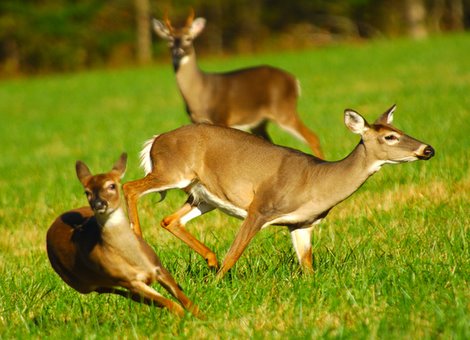Can whitetail fawns breed? If you have ever witnessed a buck chasing after a doe fawn during the hunting season this question has likely crossed your mind. So, when exactly are white-tailed fawns old enough to participate in the rut, breed and start adding to the local deer population?
It turns out that white-tailed doe fawns are capable of breeding at 6 to 7 months of age and at approximately 70 pounds in weight , but this varies a bit depending upon latitude and individual body condition. In northern states, whitetail fawns may achieve adequate size, but because of their body’s need for energy for survival, reproductive development will be delayed. In addition, shorter days and cooler temperatures provide environmental cues that limit both sexual maturity and the breeding season in does.

In southern parts of the whitetail’s range, doe fawns can achieve puberty in early to mid-winter (January and early February) and be bred during that period. This is typically after the peak breeding season — the rut — after most adult does have been breed in an area. Of course, when big whitetail bucks are observed chasing does during the late winter, at a time when fawns have come into estrus, it’s often deemed a “late rut” by hunters.
The fact is that the rut for the area was right on time, same as usually, it’s just that doe fawns have finally come of age and size to have entered into estrus. As a result, doe fawns that have been bred will give birth to their fawns much later than adult does. Fawn survival of bred fawns is believed to be low because of a lack of fawn-rearing experience and because fawns are born during the middle of the Summer season, when food can be limiting.
Doe fawns with excellent nutritional levels have greater incidence of ovulation and puberty than fawns with inadequate levels of nutrition. With this in mind, in areas with very poor habitat, even yearling does (1.5-year old) can remain sexually immature! In one research study in the mid-west, approximately one-third of doe fawns examined were reproductively fertile in December.


